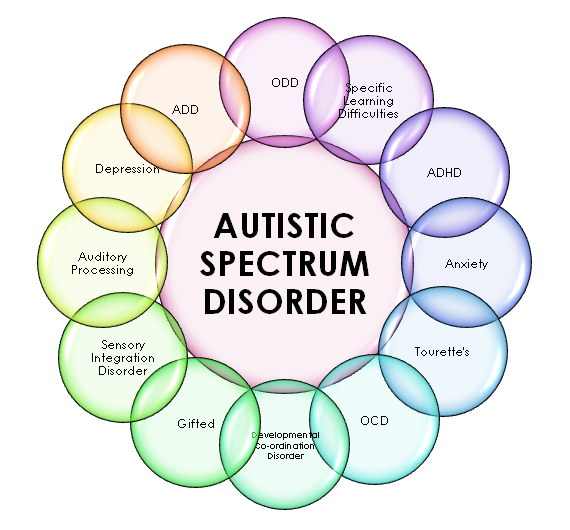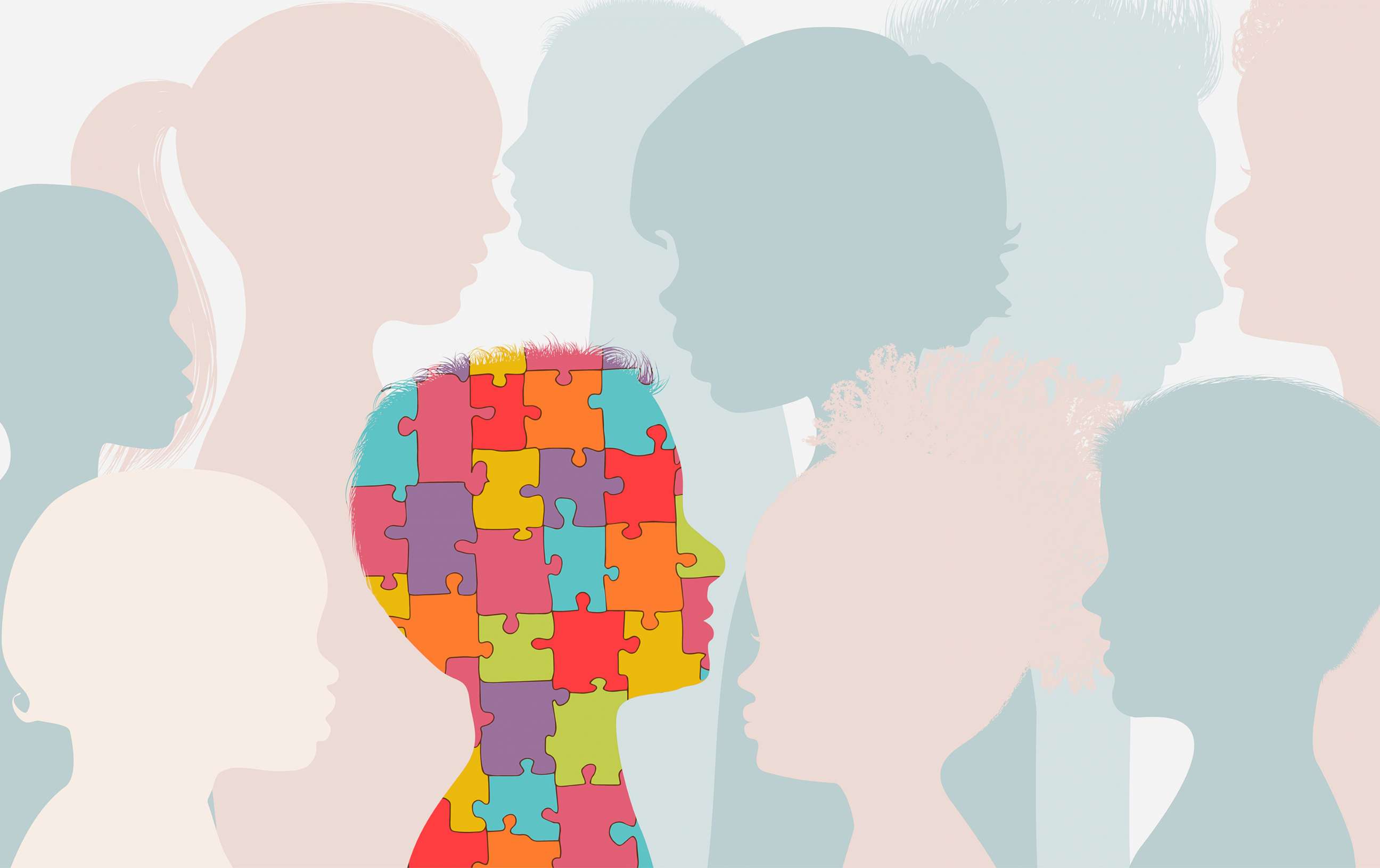Exactly how to Produce an Inclusive Setting for Pals and Family Members with Autism
Exactly how to Produce an Inclusive Setting for Pals and Family Members with Autism
Blog Article
Exploring Autism: Strategies for Effective Communication and Interaction
Effective communication and interaction with individuals on the autism spectrum necessitate an extensive understanding of their distinct requirements and preferences. Techniques such as utilizing clear language, using visual supports, and fostering consistent routines can significantly boost involvement and lower anxiousness. In addition, identifying the value of non-verbal hints and shared rate of interests paves the way for purposeful links. The intricacies of these approaches disclose additional considerations that warrant exploration, specifically in exactly how they can be adapted to diverse contexts and specific experiences. What might these adaptations look like in technique?
Recognizing Autism Spectrum Condition
Autism Range Disorder (ASD) incorporates a variety of neurodevelopmental problems identified by difficulties in social communication, communication, and repeated actions. The term "spectrum" shows the varied manifestations and varying levels of severity experienced by individuals with ASD. While some might show considerable problems, others may display high-functioning qualities, enabling greater self-reliance in every day life.
The onset of ASD normally takes place in early childhood, with indications usually recognizable by age two. Early signs might consist of postponed speech development, limited eye get in touch with, and troubles in recognizing social signs. The accurate etiology of ASD stays uncertain, research study suggests a combination of environmental and genetic elements plays an important function in its advancement.
Individuals with ASD typically possess distinct staminas, such as heightened attention to detail and extraordinary memory skills. Nevertheless, they may deal with understanding abstract principles and taking care of adjustments to regular. Because of this, treatments and assistance tailored to individual needs are essential for cultivating interaction and social skills. Recognizing the complexity of ASD is essential for advertising awareness, approval, and efficient techniques that facilitate purposeful communications with individuals on the spectrum.

Relevance of Clear Interaction
Efficient communication is important for fostering understanding and link, specifically for people with Autism Spectrum Disorder (ASD) Clear interaction not only helps with social interactions yet likewise enhances the individual's capacity to reveal their needs, thoughts, and feelings. For people with ASD, the nuances of language can often be challenging; as a result, utilizing unambiguous and uncomplicated language is necessary.
Furthermore, clear interaction helps in reducing irritation and anxiety that might occur from misconceptions. When messages are communicated in a straight and constant fashion, individuals with ASD are much better outfitted to translate information precisely, which can significantly improve their social engagement and involvement in numerous settings.
Developing regimens and using aesthetic assistances can even more bolster clear communication. These techniques give individuals with predictable frameworks that help comprehension and retention of details. Additionally, actively paying attention and being patient during communications advertises a supportive atmosphere where individuals with ASD feel valued and understood.
Inevitably, prioritizing clear communication not only encourages individuals with ASD but also cultivates more purposeful links with their peers, caretakers, and the wider community, leading the way for inclusive interactions and collective connections. - autism
Non-Verbal Communication Techniques
Communication extends beyond words, and for individuals with Autism Spectrum Condition (ASD), non-verbal signs play a significant role in interactions. Non-verbal communication techniques can include facial expressions, gestures, body language, and eye contact, all of which act as important elements for communicating emotions and objectives.
Recognizing and analyzing these non-verbal signals can boost communications with people with ASD. A warm smile or open position can create an inviting atmosphere, encouraging involvement. In a similar way, making use of aesthetic aids-- such as picture cards or icons-- can link interaction spaces and help share messages extra successfully.
It is likewise essential to be conscious of individual space, as people with ASD may have different convenience levels relating to distance. Observing their responses to physical distance can notify suitable modifications.

Developing Helpful Environments
Developing a helpful environment is crucial for fostering favorable interactions and enhancing the health of individuals with Autism Range Condition (ASD) Such environments can dramatically lower stress and anxiety and create a feeling of security, permitting people to express themselves a lot more openly.
To attain this, it is important to consider sensory level of sensitivities that individuals with ASD might experience. Modifying the physical room to include soft lighting, minimal background see this site sound, and comfortable seats can create a relaxing atmosphere. Furthermore, using consistent regimens and clear visual routines can help individuals prepare for transitions and minimize unpredictability, further advertising convenience.
Social spaces must be structured to minimize overwhelming stimuli while providing possibilities for engagement in favored tasks. Helping with locations marked for silent time can also act as a haven throughout moments of anxiety. Notably, incorporating elements of option encourages people, permitting them to exercise firm in their atmosphere.

Urging Social Interactions
Cultivating social interactions amongst individuals with Autism Range Disorder (ASD) needs intentional methods that prioritize comfort and involvement. Establishing foreseeable routines can assist reduce stress and anxiety, making social setups much more friendly. Creating structured settings with defined responsibilities and duties allows individuals to engage without the frustrating pressure of unstructured social characteristics.
Including interests and staminas right into social activities can serve as a driver for communication. For instance, organizing team tasks around shared leisure activities or topics of fascination can assist in all-natural discussions and connections. In addition, utilizing visual supports, such as photographic timetables or social manuscripts, can aid in understanding social hints and expectations.
Modeling proper social actions is crucial - autism. Adults and peers must show reliable interaction strategies, consisting of energetic listening and turn-taking. Role-playing circumstances can additionally give a secure room for people to exercise these abilities
Finally, promoting peer connections with inclusive practices is important. Motivating inclusive playdates or group getaways can develop possibilities for socializing in a comfortable setting. By implementing these strategies, caretakers and instructors can dramatically improve social communications for people with ASD, promoting their total social advancement and well-being.
Final Thought
In conclusion, efficient interaction and communication strategies are vital for sustaining people with Autism Range Disorder. Eventually, these methods encourage people with autism to navigate social landscapes, promoting their overall wellness and allowing the growth of long-term relationships.
Effective communication and interaction with individuals on the autism spectrum necessitate a detailed understanding of their special demands and choices. Clear interaction not just promotes social communications yet additionally boosts the person's capacity to share their demands, feelings, and ideas.Fostering social interactions amongst people with Autism Range Condition (ASD) requires intentional strategies that focus on convenience and interaction. By carrying out these instructors, caregivers and strategies can dramatically boost social interactions for individuals with click resources ASD, advertising their general social development and health.
In final thought, efficient interaction and communication methods are vital for supporting people with Autism Spectrum Problem.
Report this page